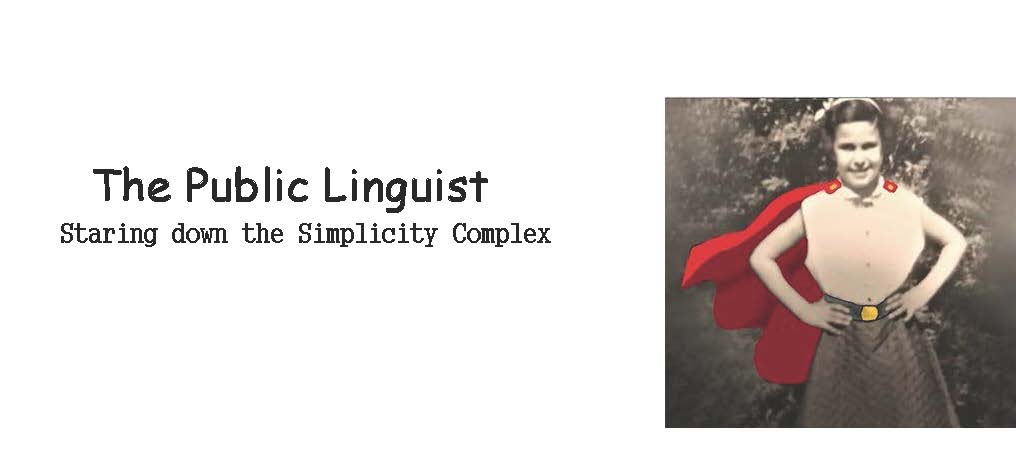An insightful (anonymous) commenter to my previous post said:
Disruption is fine, but only when oriented toward a useful and healthy goal. Disruption for disruption's sake is not helpful at all (Wanamaker missed that really).
---------
You’re right - “disruption”
for disruption's sake is the mode of current government, and has no place when
we’re building ways to get people enrolled in health plans.
But I’m not ready to say the enrollment system and
Healthcare.gov set out to not work well. We may differ about this. But that’s where I stand. You did get me interrogating just how I approach solutions, tools, technologies that, along their way, create disruption. ( I do realize I'm talking about "disruption" on a pedestrian level here - not as intended by theorists talking about disruption as social change agent/imperative).
The reality of “disruptive technologies” resonates with me
in the following way:
In public health there is a long, long history of identifying
problems or “barriers”. Most often we’ve done so by identifying
problems/deficits in the population or target community, and in rarer moments,
identified problems in the providers or delivery systems.
The over 20 years of research in (personal) health literacy
was relentlessly focused on how to “cure” the low health literacy of patients.
I’ve found, in my own work, that when you re-frame health literacy in the public area,
using a societal lens, it forces you to see health literacy and public understanding
and engagement as a social construct, much like risk (Douglas; Wildavsky;
Tversky). So you wind up broadening the
lens to look at social and organizational factors that actual can shape our interest
in and understanding of, say, health.
- More and more I find myself doing the following:
- Identifying a problem that consumers/patients
are having with X
- Asking “how is this problem similar to other
problems they are having in their day to day lives?
- Learning how they deal with this other “daily
life” problem
- Then recalibrating, re-understanding the current
problem and try to tackle the X problem I started out with
So, back to your take on the “disruption” currently caused
by the somewhat torturous enrollment process.
I’m informally speaking to “aspirants” to enrollment these days, and I
am looking forward to two panelists very close to the enrollment process who
will speak at the
New York Roundtable on Public Health Literacy soon.
·
The NYC residents I work with are all to
familiar with systems not working properly – from getting your cable fixed, to
getting power turned back on after a storm, to figuring out how to get downtown
when the subways aren’t running.
· Many residents come from countries where
disruption (and corruption) at every level was the norm. It can take them a long time to come to
expect that when a clinic doctor sends a prescription to the pharmacy, it will
be there waiting for them – and with no pills mysteriously missing. They accept that some things are “rigged” and
they can count on others not to be and they adapt.
·
Many (PEW estimates close to 65%) have smart
phones; use social media, download new apps, and suffer the same glitches and
disruptions with technology that keeps us all wondering just why we are so
tethered to these little glass boxes.
I believe there is some value in adding this analytical
perspective – room for looking at what the information commons has already
primed us for. Do you agree?
For now it seems that people will have to rely more on the Navigators, the
Call in Centers. They will have to
persist. And we worry that some won’t.
But people need and want affordable health insurance. I can hear it in line at the Dunkin’ Donuts
here in East Harlem. People are talking about it.
It’s in play. It’s
not going away.
I don't want to join or be deflected by those who are spending precious time on hand-wring and dart throwing about the glitches, and just fix them?
The other night I tried to use the healthcare.gov and things
were going great until, on the 3rd page of personal info, the
pull-down menu for what city and state I lived in DIDN’T WORK. To myself I said, “they gotta’ lot of work to
due by January.”
I’m still waiting for them to fix the glitches in the new
iPhone iOS7 – some things draining the battery.








